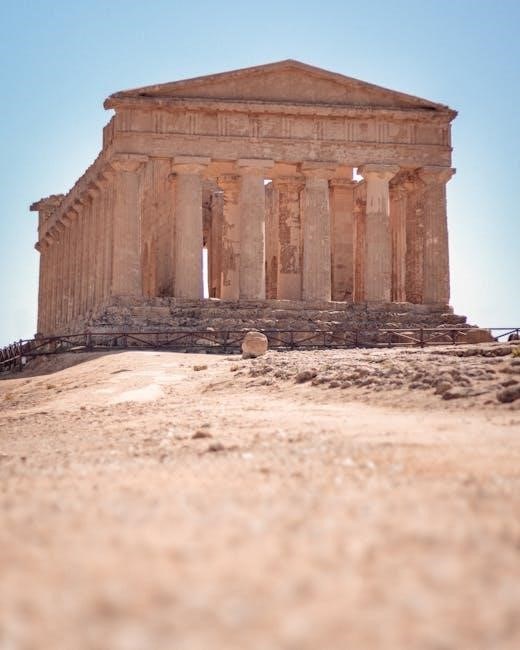The Indus Valley Civilization, flourishing around 2500 BC, was a Bronze Age society in modern-day Pakistan and northwest India, known for its advanced urban planning and trade networks.
Geographical Extent of the Indus Valley Civilization
The Indus Valley Civilization spanned a vast area, extending from the Dasht Valley in modern-day Afghanistan to Meerut and Saharanpur in northern India. It also reached the coast of the Arabian Sea in the west and the Ganges-Yamuna region in the east. The civilization was not confined to the Indus River valley alone but encompassed a network of settlements across diverse terrains. Key sites like Harappa and Mohenjo-Daro were located in present-day Pakistan, while others, such as Lothal in Gujarat, highlight its southeastern reach. This extensive geographical spread, covering parts of Pakistan, India, and Afghanistan, underscores the civilization’s adaptability and influence across South Asia. Its westernmost site, Sutkagen Dor, was a coastal outpost, while trade routes connected it to regions as far as Mesopotamia.
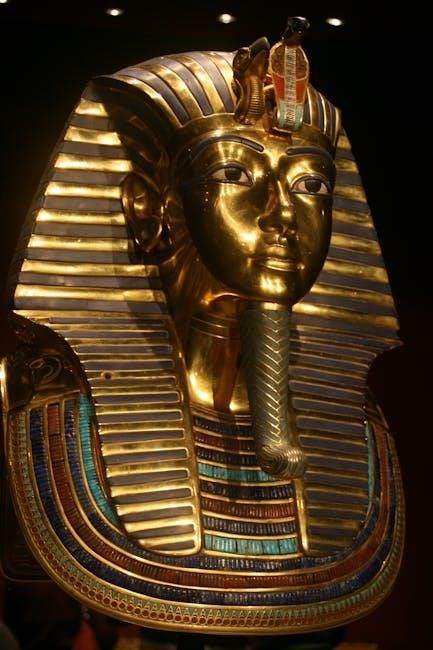
Origins and History of the Indus Valley Civilization
The Indus Valley Civilization emerged around 3300 BCE, reaching its peak between 2600 and 1600 BCE. Its origins trace back to the Neolithic period, with early settlements evolving into a sophisticated urban culture. Discovered in 1921 at Harappa, this civilization is often called the Harappan civilization. Archaeological evidence suggests a cultural continuum from earlier societies, blending rural traditions with urban advancements. The civilization’s history is divided into three phases: early (3300–2600 BCE), mature (2600–1900 BCE), and late (1900–1300 BCE). Its decline began around 1900 BCE, possibly due to environmental changes, such as the drying of the Saraswati River. This period marked a transition from urban centers to smaller, rural communities, signaling the end of this remarkable Bronze Age society.

Urban Planning and Architecture
The Indus Valley Civilization showcased sophisticated urban planning, with grid layouts, advanced drainage systems, and standardized kiln-fired bricks, reflecting exceptional engineering and town planning skills.
4.1. Major Cities: Harappa and Mohenjo-Daro
Harappa and Mohenjo-Daro were the most prominent cities of the Indus Valley Civilization, showcasing advanced urban planning and architectural sophistication. Both cities featured grid layouts, with well-planned streets and drainage systems. Harappa, located in modern-day Pakistan, was known for its granary and impressive fortifications, while Mohenjo-Daro, situated in Sindh, featured the famous Great Bath, a remarkable feat of engineering. The cities were built using kiln-fired bricks, emphasizing uniformity and durability. Their designs reflected a high level of organization and civic planning, highlighting the civilization’s emphasis on hygiene and community living. These cities served as centers of culture, trade, and governance, epitomizing the Indus Valley Civilization’s urban excellence. Their discovery in the 20th century provided invaluable insights into the lives of this ancient Bronze Age society.
4.2. Layout and Infrastructure
The Indus Valley Civilization is renowned for its sophisticated urban layout and infrastructure. Cities were meticulously planned with a grid system, featuring wide, straight streets intersecting at right angles. This organized layout facilitated efficient drainage and waste management systems, with elaborate networks of clay pipes and sewers. Buildings were constructed using standardized kiln-fired bricks, ensuring durability and uniformity. The cities also had impressive defensive walls, such as those found in Harappa, which were up to 30 feet wide. These advanced engineering feats highlight the civilization’s emphasis on hygiene, organization, and communal living. The infrastructure reflects a well-planned society with a focus on sustainability and urban development, setting it apart from other ancient civilizations of its time.
Economy and Trade
The Indus Valley Civilization had a thriving economy based on agriculture, crafts, and trade. They traded goods like cotton, pottery, and metals with neighboring regions and Mesopotamia.
5.1. Agriculture and Food Production
The Indus Valley Civilization was primarily agrarian, with agriculture forming the backbone of its economy. The people cultivated crops such as wheat, barley, and legumes, utilizing advanced irrigation techniques. Archaeological evidence suggests the use of the plow, enabling efficient farming. The fertile plains of the Indus River supported surplus food production, which in turn sustained the civilization’s urban centers. Agricultural tools, including stone sickles and copper implements, indicate a sophisticated understanding of farming practices. Trade networks also facilitated the exchange of agricultural goods, further enriching the economy. The reliance on agriculture not only provided sustenance but also laid the foundation for the civilization’s prosperity and urban development.
5.2. Trade Networks and Commerce
The Indus Valley Civilization maintained extensive trade networks, both within the region and internationally. Trade links extended to Mesopotamia, Central Asia, and the Persian Gulf, with commodities such as cotton textiles, metals, and pottery being exchanged; Internal trade was facilitated by the standardized weights and measures found in various sites, indicating a well-organized system. The presence of seals, often depicting animals and symbols, suggests their use in commercial transactions. Harappan merchants traded goods like beads, copper, and bronze, while imports included precious stones and metals. Trade routes, including both land and maritime paths, connected cities like Lothal, which served as a major port. This robust trade system contributed significantly to the civilization’s economic prosperity and cultural exchange, making it a key player in the ancient global economy.
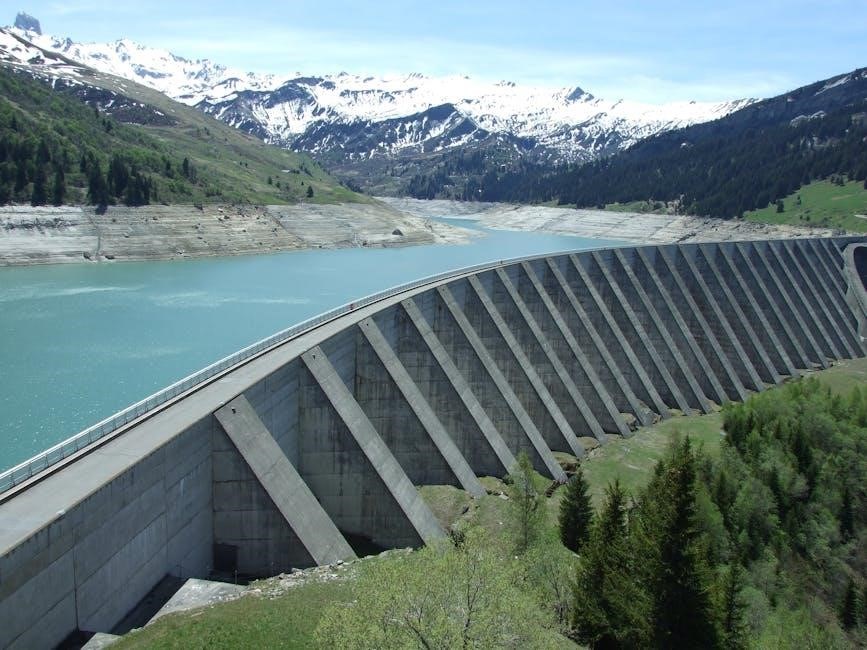
Social Structure and Daily Life
The Indus Valley Civilization was a highly advanced urban society with a well-organized social structure. The people likely lived in a hierarchical system, with elites controlling city governance. Artisans, merchants, and laborers formed the backbone of the economy, while farmers worked the land. Daily life revolved around trade, craftsmanship, and agriculture. Homes were built with standardized bricks, indicating a planned city layout. Public facilities like drainage systems suggest a focus on communal welfare. Artifacts such as pottery, jewelry, and seals reveal a rich cultural life. Religious practices remain unclear, but symbols and figurines hint at spiritual beliefs. Family life was central, with evidence of domestic activities in excavated homes. This sophisticated society laid the foundation for later urban cultures in South Asia, showcasing remarkable social and cultural achievements for its time.
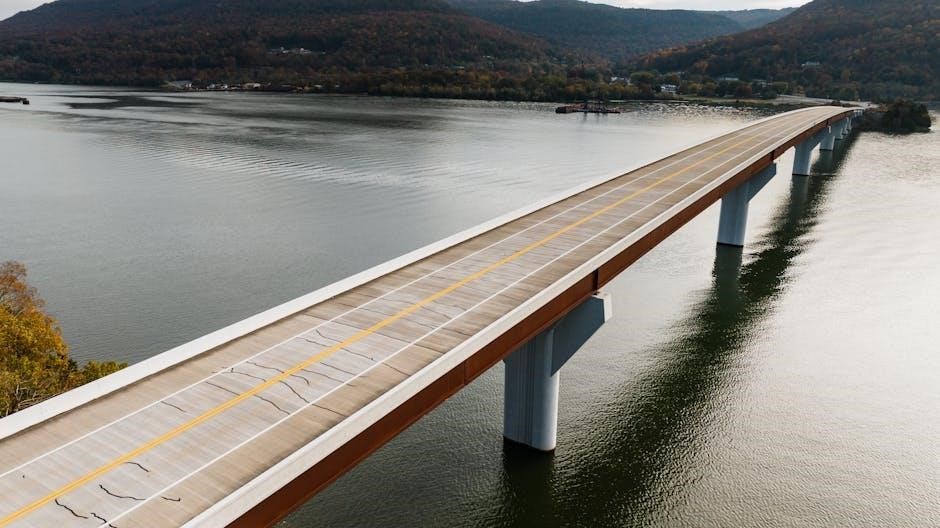
Religious Beliefs and Practices
The religious beliefs of the Indus Valley Civilization remain largely speculative due to limited textual evidence. Archaeological findings suggest a complex spiritual system, with possible worship of natural forces, fertility deities, and ritualistic practices. The “Pashupati Seal” depicts a figure surrounded by animals, interpreted as a proto-Shiva or nature deity. Small terracotta figurines, believed to represent fertility goddesses, and ritualistic objects like pottery and seals hint at religious practices. The Great Bath at Mohenjo-Daro may have served as a ritual site. While no definitive proof of organized religion exists, these artifacts indicate a deep connection to spirituality and nature. The civilization’s religious practices likely influenced later South Asian traditions, though their exact nature remains a subject of scholarly debate.
Art and Culture
The Indus Valley Civilization showcased advanced craftsmanship in pottery, seals, and jewelry, reflecting a sophisticated artistic tradition and cultural expression through intricate designs and symbolic motifs.
8.1. Art and Craftsmanship
The Indus Valley Civilization is renowned for its exceptional art and craftsmanship, which reflect the sophistication of its people. Pottery was a prominent art form, with intricate designs and geometric patterns. Craftspeople excelled in creating seals, often carved from steatite, depicting animals and symbolic imagery. Jewelry-making was another hallmark, with artisans crafting beads from materials like carnelian, lapis lazuli, and faience. These items were not only decorative but also served religious or administrative purposes. The craftsmanship demonstrates advanced technical skills, such as the use of kilns for pottery and precise carving tools for seals. Artistic expression was deeply integrated into daily life, showcasing the civilization’s cultural richness and aesthetic sensibilities. These creations provide valuable insights into the social and religious practices of the time. The art of the Indus Valley remains a testament to its people’s ingenuity and creativity.
8.2. Architecture and Construction Techniques
The Indus Valley Civilization showcased remarkable architectural skills, with cities like Harappa and Mohenjo-Daro featuring grid layouts, indicating advanced urban planning. Buildings were constructed using sun-dried and burnt bricks, often standardized in size, reflecting a high level of engineering precision. The drainage system was particularly sophisticated, with covered drains and public latrines, underscoring a focus on hygiene. The Great Bath at Mohenjo-Daro is a testament to their architectural prowess and religious practices. Monumental structures like granaries and citadels highlight their ability to design for both practical and ceremonial purposes. Their use of local materials and innovative techniques demonstrates a deep understanding of construction principles. These architectural achievements emphasize the civilization’s emphasis on order, functionality, and community well-being, setting them apart from other ancient cultures.
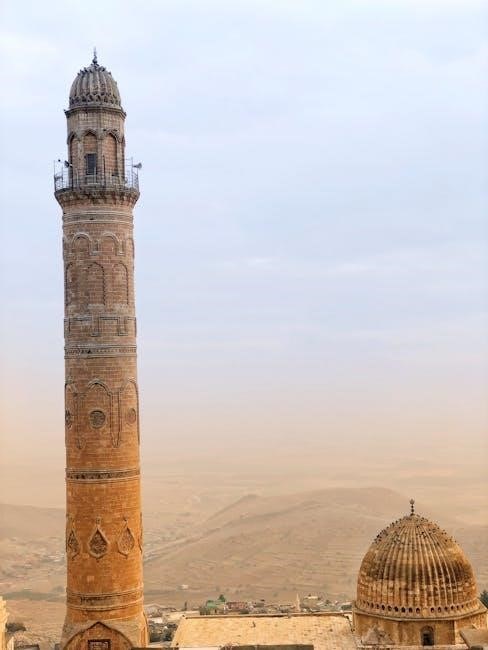
Decline of the Indus Valley Civilization
The Indus Valley Civilization began to decline around 1600 BCE, with factors such as climate change, droughts, and tectonic activity potentially disrupting agricultural stability. The drying up of the Saraswati River and shifting water sources may have strained resources. Trade networks with Mesopotamia also weakened, impacting the economy. Urban centers like Mohenjo-Daro show signs of abandonment and fire damage, suggesting possible invasions or internal unrest. The decline was gradual, with populations migrating to new regions, such as the Ganges Valley. This transition marked the end of the Mature Harappan phase, leading to the eventual disappearance of this advanced urban culture. The exact causes remain debated, but environmental and socio-economic factors likely played significant roles in its demise.
Legacy and Impact on Later Civilizations
The Indus Valley Civilization left a profound legacy, influencing later cultures and civilizations in South Asia and beyond. Its advanced urban planning, water management systems, and architectural techniques set standards for future societies. The use of standardized weights, measures, and seals facilitated trade networks that extended across regions. Artistic and craftsmanship traditions, such as pottery and metallurgy, were adopted by subsequent cultures. The civilization’s emphasis on hygiene and public infrastructure also inspired later developments in urban design. Additionally, its cultural practices, including religious symbols like the linga and yoni, found resonance in Vedic and Hindu traditions. The Indus Valley Civilization’s contributions to trade, technology, and culture ensured its enduring impact on the evolution of civilizations in the Indian subcontinent and beyond, shaping the course of history in lasting ways.

Comparison with Other Ancient Civilizations
The Indus Valley Civilization shares similarities with ancient Mesopotamia and Egypt in terms of urban development and technological advancements, such as writing systems and metallurgy. However, it stands out for its unique urban planning and water management systems, which were more advanced than those of its contemporaries. Unlike Mesopotamia, the Indus Valley lacked grand monumental architecture but emphasized public infrastructure, such as drainage systems. While Mesopotamia and Egypt were ruled by powerful monarchs, the Indus Valley Civilization appears to have had a more decentralized governance system. Its emphasis on trade and craftsmanship also parallels the achievements of other ancient civilizations, yet its distinct cultural and technological innovations set it apart as a pioneering urban culture in the ancient world.
Modern Discoveries and Research
Recent advancements in technology have significantly enhanced our understanding of the Indus Valley Civilization. Archaeologists now utilize tools like Ground-Penetrating Radar (GPR) and Geographic Information Systems (GIS) to map and excavate sites with greater precision. For instance, the discovery of a potential script at Rakhigarhi has sparked renewed interest in deciphering the Indus script. Additionally, isotopic analysis of human remains has provided insights into diet, migration patterns, and social hierarchies. Ongoing research also focuses on the civilization’s environmental interactions, revealing how climate change may have influenced its decline. International collaborations and open-access databases are fostering a more interdisciplinary approach to studying this ancient culture. These modern discoveries continue to challenge and refine earlier theories about the Indus Valley Civilization, offering a more nuanced understanding of its legacy and significance.
The Indus Valley Civilization stands as one of the most fascinating and enigmatic ancient cultures, showcasing advanced urban planning, trade networks, and artistic craftsmanship. Its legacy continues to inspire research, offering insights into early human development. Despite its mysterious decline, the civilization’s influence is evident in later societies, highlighting its enduring impact. Modern discoveries and research further illuminate its contributions, ensuring its relevance in understanding ancient history. The Indus Valley Civilization remains a cornerstone of early urban development, leaving behind a rich cultural and historical legacy that continues to captivate scholars and the public alike.
